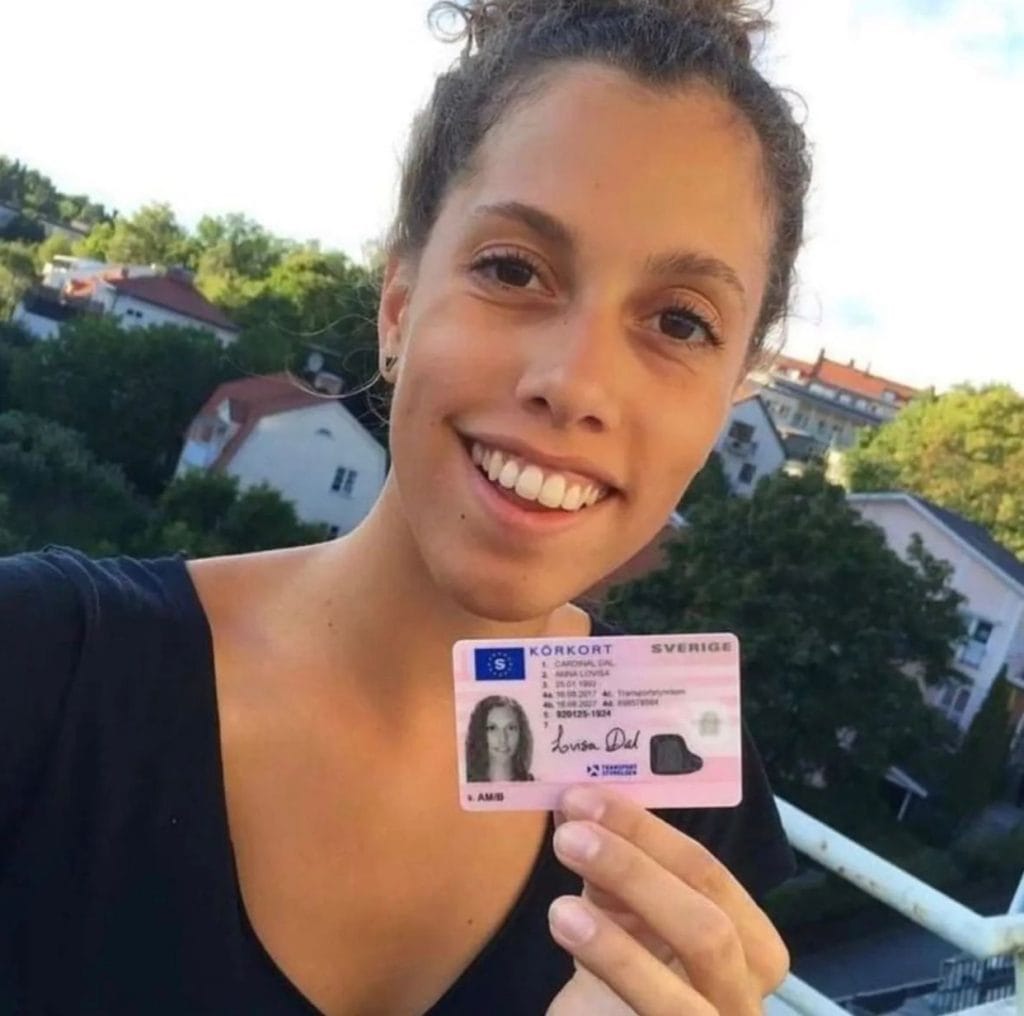Why Buy Driving License Still Matters In 2024
페이지 정보

본문
The Comprehensive Guide to Legally Obtaining a Driving License
Driving is an essential ability for lots of, providing the liberty to travel where and when you desire, often making life easier and satisfying. Nevertheless, getting a driving license is a process that requires understanding, perseverance, and adherence to legal procedures. This guide aims to provide an in-depth introduction of the actions one should follow to legally get a driving license, highlighting important considerations and frequently asked concerns to guarantee a smooth and hassle-free experience.

Understanding the Basics
Before diving into the application process, it's essential to comprehend the basic requirements and kinds of driving licenses available. Driving laws vary significantly from country to country, and even within various states or provinces within the exact same country. Normally, there are numerous types of driving licenses, consisting of:
- Learner's Permit: This is frequently the initial step in the process, enabling new chauffeurs to acquire experience under supervision.
- Provisionary License: Issued after passing a fundamental driving test, this license typically includes limitations and is a stepping stone to a full license.
- Full Driver's License: Once all the required requirements are satisfied, chauffeurs can obtain a complete license, which offers total driving benefits.
- Commercial Driver's License (CDL): Required for those who wish to operate industrial lorries, such as trucks or buses.
Steps to Obtain a Driving License
1. Research Study Local Driving Laws
The primary step in getting a driving license is to research the specific requirements in your location. Check out the main website of your local Department of Motor Vehicles (DMV) or equivalent company to find comprehensive information about the licensing procedure, consisting of age constraints, needed files, and charges.
2. Prepare Required Documentation
Each jurisdiction has its own set of documents that must be sent to request a driving license. Frequently required files include:
- Proof of Identity: A passport, birth certificate, or state-issued ID.
- Evidence of Residency: Utility expenses, lease contracts, or other official documents that confirm your address.
- Social Security Number (if suitable): In some countries, a social security number or equivalent is needed for identification.
- Vision Test Results: Some places need a vision test before issuing a student's authorization or license.
3. Take a Driver's Education Course
Numerous states and nations need new chauffeurs to complete a driver's education course. These courses are designed to teach the rules of the road, traffic laws, and safe driving practices. They can be completed svenska körkort online (https://gittea.devfl-int.com) or in a classroom setting and frequently consist of both theoretical and practical parts.
4. Use for a Learner's Permit
When the needed paperwork is ready and the driver's education course is finished, the next action is to get a learner's authorization. This generally involves visiting the DMV or sending an application online. You will likewise need to pass a written test that covers traffic laws and driving understanding.
5. Practice Driving
With a student's permit, you can begin practicing driving under the guidance of a licensed grownup. This is a vital action in building your self-confidence and skills behind the wheel. It's also essential to acquire experience in numerous driving conditions, such as night driving, highway driving, and driving in severe weather condition.
6. Set up and Pass the Driving Test
After gaining sufficient driving experience, you can arrange a driving test with the DMV. The test will examine your capability to safely operate a lorry and follow traffic laws. You will need to bring an effectively signed up and guaranteed vehicle to the test, and the inspector will assess your driving abilities on an established route.
7. Make an application for a Provisional License
If you pass the driving test, you will usually get a provisional license. This license may include limitations, such as a curfew or a limitation on the number of travelers you can have in the car. These constraints are developed to reduce the risk of accidents and help new chauffeurs adapt to the road.
8. Update to a Full License
When you have actually held a provisionary license for the required duration and satisfied any extra requirements, you can update to a full driver's license. This process usually involves a basic application and may need a retest or additional documentation.
Tips for a Successful Application
- Start Early: Begin the process as soon as you fulfill the age requirement to offer yourself ample time to prepare.
- Stay Informed: Keep current with any changes in driving laws or DMV treatments.
- Practice Regularly: Consistent practice is key to constructing confidence and enhancing your driving skills.
- Stay Calm During the Test: Anxiety can impact your performance, so take deep breaths and remain focused.
- Follow DMV Instructions: Pay very close attention to the instructions provided by the DMV and the inspector during your test.
Often Asked Questions (FAQs)
Q: What is the minimum age to get a student's license?
A: The minimum age varies by jurisdiction. In the United States, it generally ranges from 15 to 16 years of ages. In the UK, the minimum age is 17. Check your regional DMV website for particular information.
Q: Can I make an application for a driver's license online?
A: Some jurisdictions allow you to finish parts of the application process online, such as submitting kinds and scheduling tests. However, you will normally need to go to a DMV workplace personally to submit required files and take the driving test.
Q: What happens if I fail the driving test?
A: If you fail the driving test, you can normally retake it after a particular duration. This duration varies by area, but it is typically a few weeks. It's a great concept to practice more before retaking the test to improve your possibilities of success.
Q: Can I drive alone with a learner's authorization?
A: No, a student's license generally needs you to be accompanied by a certified adult, typically over 21 years of ages, who is seated in the front passenger seat.
Q: Is a vision test required to get a driving license?
A: Yes, most jurisdictions need a vision test to guarantee that you can safely operate an automobile. You can generally take this test at the DMV or with an authorized eye doctor.
Q: How long does it take to get a full driver's license?
A: The time needed to acquire a complete driver's license varies depending upon your jurisdiction and the specific actions involved. Normally, it can take numerous months, including the time needed to finish a driver's education course, hold a learner's license, and pass the driving test.
Q: Can I use a provisional license to drive for work?
A: It depends on the limitations placed on your provisionary license. Some provisional licenses enable you to drive for work, while others might have specific constraints. Examine your license for information or call the DMV for explanation.
Q: What is the difference in between a learner's license and a provisional license?
A: A student's license is the first phase of the licensing procedure and permits you to drive only under guidance. A provisionary license, on the other hand, grants you more driving benefits however might still have some constraints, such as a curfew or passenger limitations.
Q: Can I look for a commercial driver's license (CDL) without a full driver's license?
A: No, you normally require a complete driver's license before looking for a CDL. A CDL is a customized license that requires additional training and testing, and it is just released to those who have actually demonstrated the capability to securely run a basic lorry.

Q: What should I do if I lose my driving license?
A: If you lose your driving license, you must report it to the DMV and apply for a replacement. You might require to supply proof of identity and pay a fee. It's also a good idea to alert your insurer and any other pertinent parties.
Getting a driving license is a considerable milestone that opens up new chances and increases independence. By following the actions described in this guide and staying informed about regional laws and requirements, you can make sure a smoother and more effective licensing process. Keep in mind that driving is a serious responsibility, and taking the time to learn and practice is essential for your safety and the security of others on the roadway.
- 이전글10 Facts About High Quality Fakes That Insists On Putting You In Good Mood 25.06.30
- 다음글10 Websites To Help You To Become An Expert In Dolce Gusto Machine 25.06.30
댓글목록
등록된 댓글이 없습니다.

